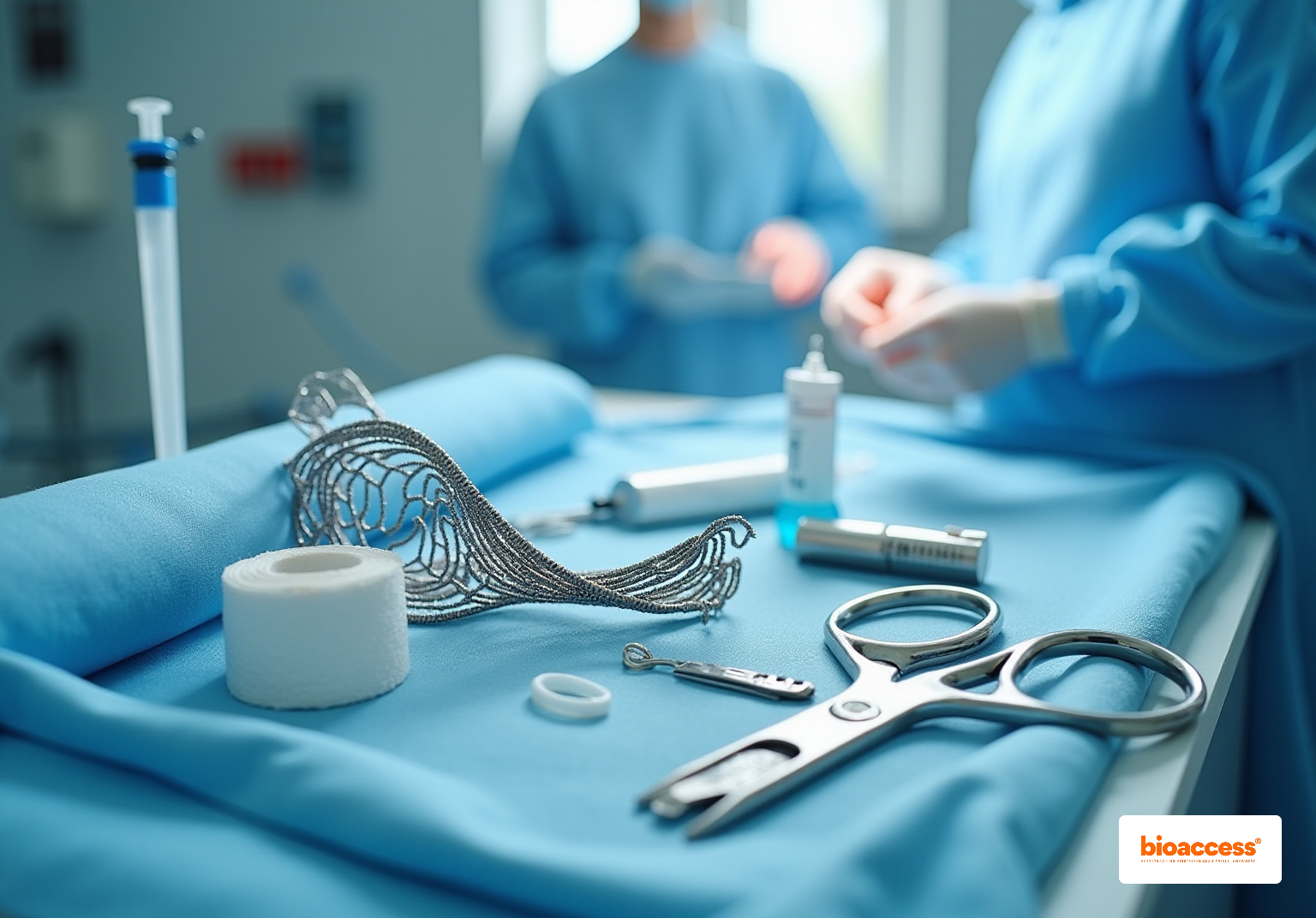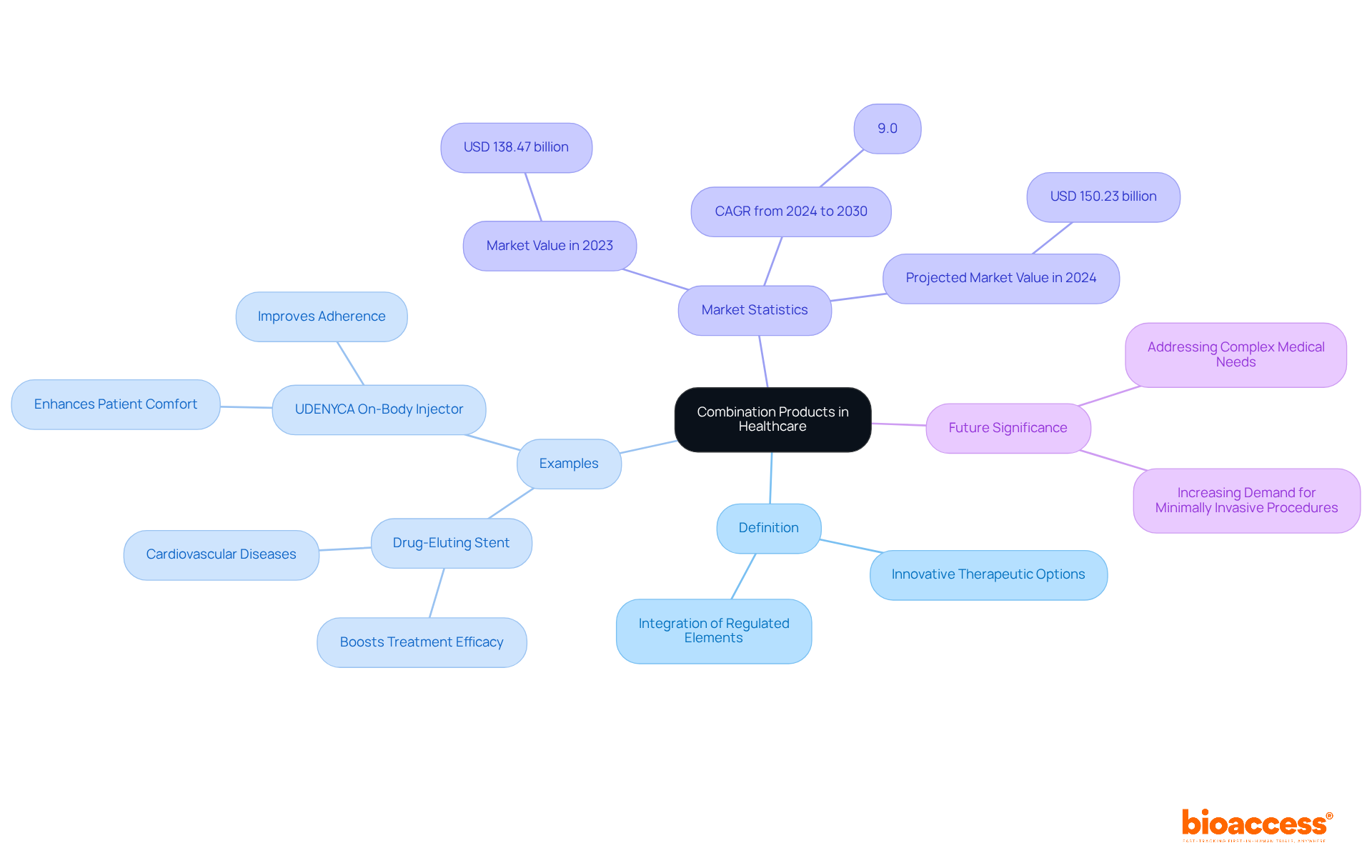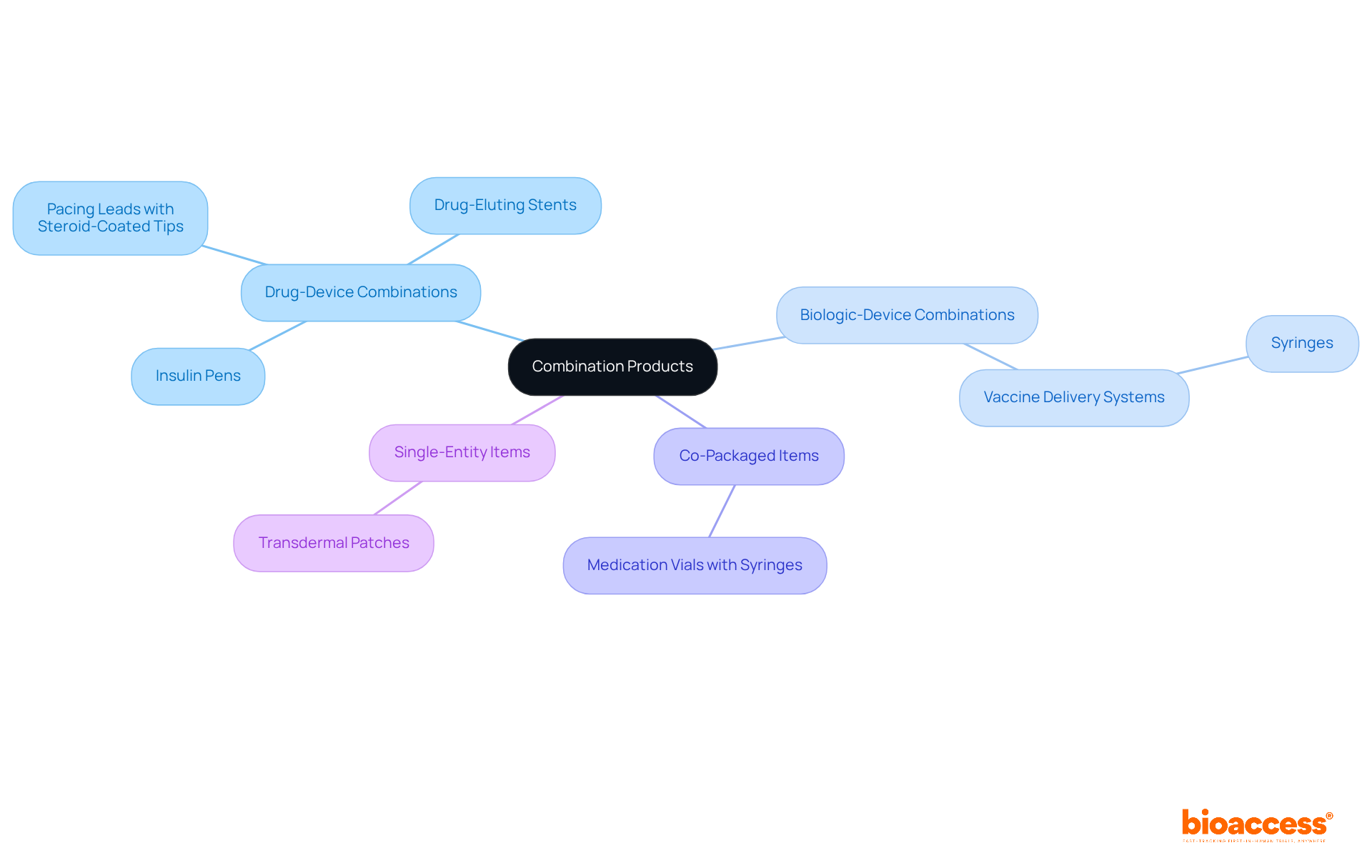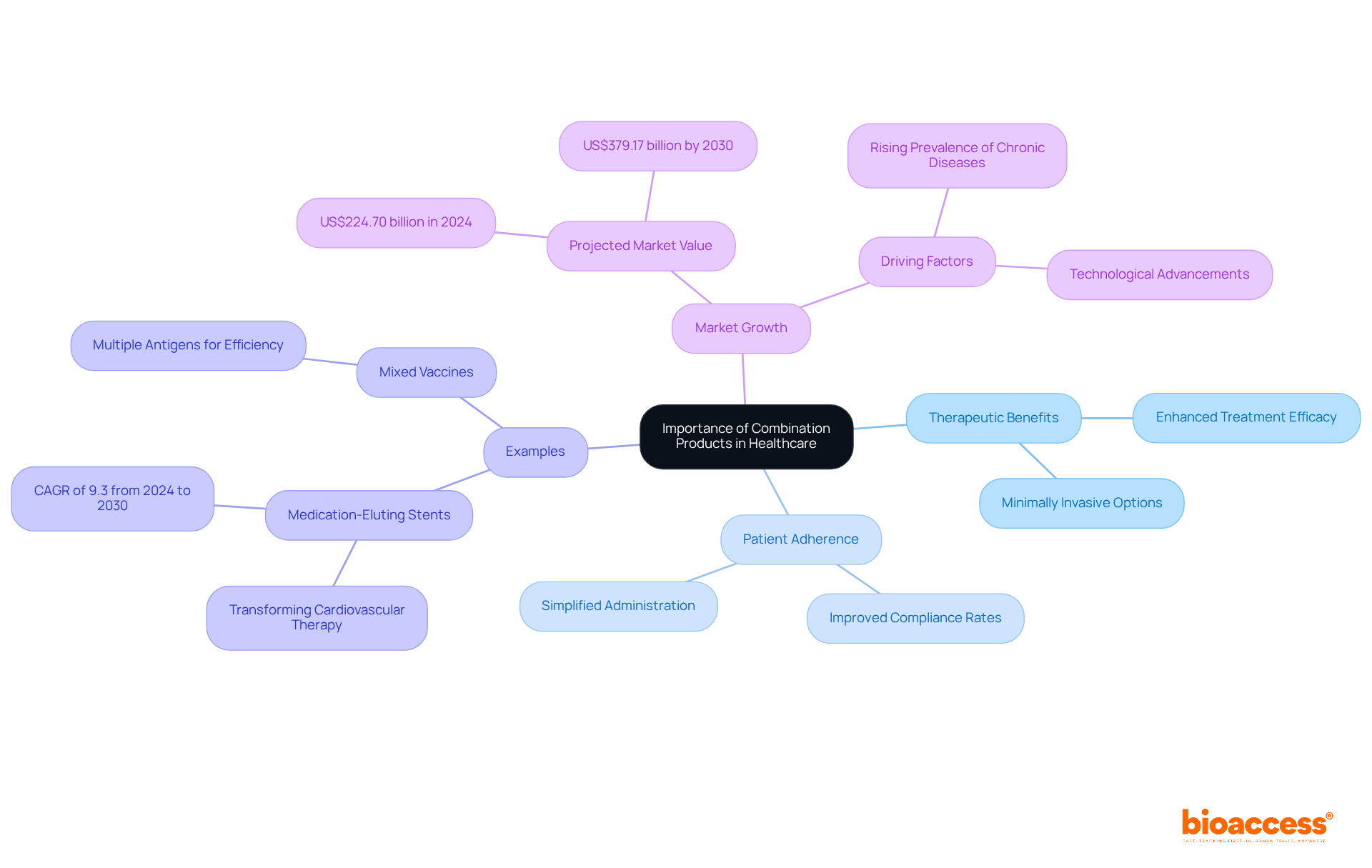


Combination products are pivotal in healthcare, seamlessly integrating drugs, devices, and biologics to enhance therapeutic outcomes and bolster patient adherence. This article underscores their significance through compelling examples, such as drug-eluting stents, and outlines the projected growth of the combination products market. These innovations not only address intricate medical challenges but also contribute substantially to improved patient care.
Combination products are transforming the healthcare landscape by integrating the capabilities of drugs, devices, and biologics to develop innovative solutions tailored to complex medical needs. These multifaceted products not only enhance therapeutic efficacy but also improve patient adherence, supported by a growing market projected to exceed USD 150 billion in the coming years.
However, as demand for these integrated therapies escalates, navigating the intricate regulatory landscape presents significant challenges for developers. What implications does this hold for the future of patient care and the progression of medical treatments?
Combination products represent innovative therapeutic or diagnostic options that integrate two or more regulated elements, including medications, medical devices, and biological items. These products are meticulously designed to enhance therapeutic outcomes by leveraging the unique properties of each component. A notable example is the drug-eluting stent, which merges a medical device with a drug to boost treatment efficacy for cardiovascular diseases. The importance of this combination product is underscored by its ability to provide integrated solutions that address complex medical needs, ultimately leading to improved care and outcomes for patients.
Statistics reveal that the global drug-device combination offerings market was valued at approximately USD 138.47 billion in 2023 and is projected to reach USD 150.23 billion in 2024, reflecting a compound annual growth rate (CAGR) of 9.0% from 2024 to 2030. This growth is fueled by increasing preferences among patients and physicians for minimally invasive procedures and consistent-dosing treatment alternatives. Successful examples, such as the FDA-approved UDENYCA on-body injector, demonstrate how this combination product can enhance patient comfort and adherence to treatment plans, which significantly improves health outcomes.
As healthcare continues to evolve, the significance of combination therapies in patient care becomes increasingly critical, offering innovative solutions that meet the demands of modern medicine.

Combination products can be categorized into various classifications based on their components and packaging methods. The primary classifications include:
Drug-Device Combinations: These items merge a drug with a medical device, exemplified by an insulin pen that administers insulin (the drug) through a delivery device. This category plays a crucial role in chronic disease management, particularly in diabetes care, where adherence to treatment is vital.
Biologic-Device Combinations: These consist of a biologic item paired with a device, such as a vaccine delivery system utilizing a syringe. Such combinations are essential for effective immunization strategies, enhancing the delivery and efficacy of biologics.
Co-Packaged Items: These comprise distinct items packaged together, like a medication vial alongside a syringe for administration. This method streamlines procedures for healthcare professionals and individuals, ensuring that essential elements are readily accessible.
Single-Entity Items: These are items where the drug and device are integrated into a single unit, such as a transdermal patch delivering medication through the skin. This approach enhances adherence by providing a convenient and effective delivery system.
Each type of combination product serves a distinct function, improving treatment effectiveness and patient adherence. The market for drug-device pairings is projected to grow significantly, reaching USD 150.23 billion in 2024 and expanding at a CAGR of 9.3% from 2025 to 2030. Regulatory support and accelerated approval processes have facilitated the advancement of these offerings, underscoring their significance in contemporary healthcare. As Dr. Mark Ostwald, CEO of Freudenberg Medical, remarked, "Drug-device hybrid items are inspiring a new generation of innovative solutions to enhance patients’ outcomes." Examples of successful drug-device pairings include drug-eluting stents, pacing leads with steroid-coated tips, catheters with antimicrobial coatings, and prefilled drug delivery systems, all of which are crucial in meeting the growing demand for integrated healthcare solutions.

The approval procedure for combination products is governed by a complex framework that varies by region. In the United States, the FDA oversees combination products through the Office of Combination Products (OCP), determining the appropriate regulatory pathway based on the item's primary mode of action. This often requires adherence to both medication and device regulations, necessitating compliance with Good Manufacturing Practices (GMP) and extensive safety and efficacy testing. Developers encounter unique challenges, including stringent labeling requirements and the necessity for robust post-market surveillance. Understanding these regulatory considerations is crucial, as approximately 85%-90% of New Drug Applications (NDAs) submitted to the FDA receive approval, underscoring the importance of navigating the approval landscape effectively.
Moreover, the integration of drug delivery devices with medical items as a combination product is expected to enhance treatment accuracy and efficiency, further emphasizing the need for effective regulatory navigation for mixed offerings in the healthcare market. Bioaccess® provides accelerated clinical trial services, enabling Medtech, Biopharma, and Radiopharma startups to advance to the next phase of their studies 40% faster. Their comprehensive clinical trial management services include:
All essential for navigating the complexities of the approval process.
Under the leadership of experts like Katherine Ruiz, who directs regulatory affairs for medical devices and in vitro diagnostics in Colombia, bioaccess® is strategically positioned to support clients in achieving successful outcomes. The market for combination products, specifically drug-device combinations, is projected to reach USD 78.34 billion by 2030, reflecting the growing demand for these innovative solutions and the significance of bioaccess®'s services within this expanding sector.

Combination products are essential in advancing healthcare solutions by providing enhanced therapeutic benefits and improving patient adherence. For instance, medication-eluting stents have transformed cardiovascular therapy by combining a substance that prevents restenosis with a stent that supports blood vessels. The drug-eluting stent segment is projected to experience the fastest compound annual growth rate (CAGR) of 9.3% from 2024 to 2030, driven by the rising prevalence of cardiovascular disorders, which account for 695,000 deaths in the U.S. annually. Likewise, mixed vaccines, which incorporate multiple antigens, have simplified immunization procedures, enhancing their efficiency and effectiveness.
As healthcare continues to evolve, the integration of drugs, devices, and biologics into combination products will likely result in innovative treatments that address complex medical challenges, ultimately enhancing patient care and outcomes.

In conclusion, combination products are indispensable in modern healthcare, merging diverse therapeutic components to significantly enhance patient outcomes and optimize treatment processes. These cutting-edge solutions, which integrate drugs, devices, and biologics, are meticulously crafted to effectively meet complex medical needs, thereby elevating patient care and adherence.
This article has elucidated key insights regarding the types, market expansion, and regulatory factors influencing combination products. The substantial anticipated market growth underscores the surging demand for these innovations, propelled by their capacity to deliver integrated healthcare solutions. Noteworthy examples, such as drug-eluting stents and on-body injectors, exemplify the concrete advantages these products provide in terms of treatment efficacy and patient comfort.
As the healthcare landscape undergoes continual transformation, the importance of combination products is increasingly highlighted. They not only respond to the escalating complexity of medical treatments but also epitomize the future of patient care, where innovation and integration are crucial. It is imperative for healthcare providers and stakeholders to embrace these advancements to meet the rising expectations for effective and efficient medical solutions.
What are combination products in healthcare?
Combination products are therapeutic or diagnostic options that integrate two or more regulated elements, such as medications, medical devices, and biological items, designed to enhance therapeutic outcomes.
Can you provide an example of a combination product?
A notable example is the drug-eluting stent, which combines a medical device with a drug to improve treatment efficacy for cardiovascular diseases.
Why are combination products important?
They provide integrated solutions that address complex medical needs, leading to improved care and outcomes for patients.
What is the current market value of drug-device combination products?
The global drug-device combination offerings market was valued at approximately USD 138.47 billion in 2023 and is projected to reach USD 150.23 billion in 2024.
What is the expected growth rate for the drug-device combination market?
The market is expected to reflect a compound annual growth rate (CAGR) of 9.0% from 2024 to 2030.
What factors are driving the growth of combination products?
The growth is fueled by increasing preferences among patients and physicians for minimally invasive procedures and consistent-dosing treatment alternatives.
Can you give an example of a successful combination product?
The FDA-approved UDENYCA on-body injector is an example that enhances patient comfort and adherence to treatment plans, significantly improving health outcomes.
How do combination therapies contribute to modern medicine?
Combination therapies offer innovative solutions that meet the demands of modern medicine, making their significance in patient care increasingly critical.